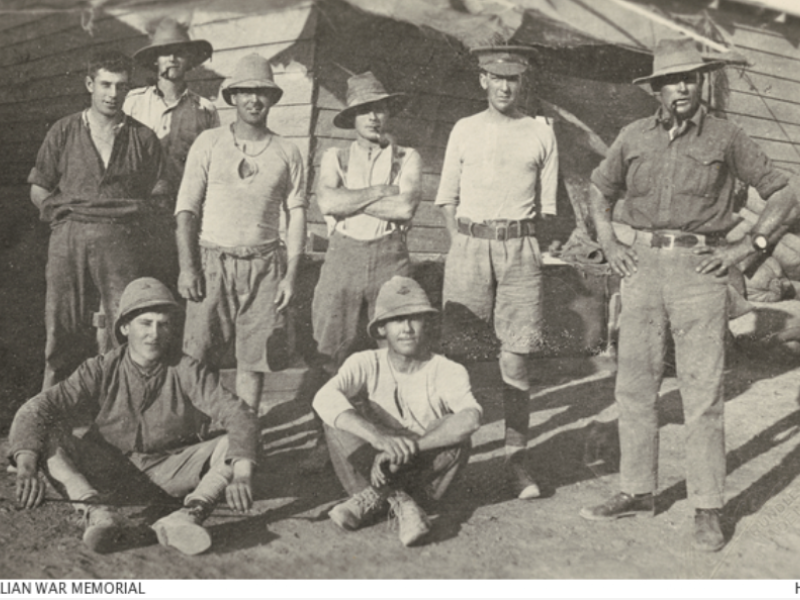Corporal Fergus Stanley Ibbott, 3rd Light Horse Regiment
Fergus Stanley Ibbott was born on 11 February 1889 in Apsley, Tasmania, to George and Charlotte Ibbott. He attended Buckland’s School in Hobart. He served in the local light horse regiment for over eight years, and was known as “a good all-round sportsman and a particularly fine horseman”.
Ibbott enlisted in the Australian Imperial Force in May 1915. He was posted to the 3rd Light Horse Regiment, arriving on Gallipoli on 2 October 1915.
Less than a month later, he fell ill with an infected arm. He was evacuated to Mudros and then to Alexandria, arriving just after Christmas. In early 1916, Ibbott was promoted to corporal. Captain Bennett of C Squadron later wrote:
“As a soldier and a man, he was all that could be desired … He was a great favourite with all his comrades, and with everybody with whom he came in contact, and no matter to what duty or task he was set he always carried out to the best of his ability, and always with good results.”
Between January and May 1916, the 3rd Light Horse Regiment was deployed to protect the Nile Valley from bands of pro-Turkish Senussi Arabs. From late May, the regiment was defending the Suez Canal.
On 3 August, they came under attack near the Egyptian town of Romani. The heavily outnumbered Australian Light Horse Brigade was initially forced back but reinforcements stabilised the position. By 5 August, Turkish resistance collapsed, ending the last attack on the Suez Canal.
Corporal Fergus Ibbott was holding an outpost when the attack began. Major Bisdee VC later recalled:
“The Turks were expected, but no one ever expected them to come on with the fury which they did … but our men were ready for them, and stood firm, only retiring when the enemy – who were in great numbers – started to get round our flanks.”
Ibbott’s friend, Private Geoff Gardiner wrote: “He acted the part of a brother to me on the first day of the action, when I was so knocked up after the retirement and he would not allow me to attempt anything more for the rest of the day.”
On the second day, as the tide was turning, Corporal Ibbott was wounded. Gardner recalled, “Hunn and I helped him back to the ambulance. He was suffering a good deal, but seemed very cheerful, in spite of the pain.”
Despite the best efforts of the field ambulance, Corporal Fergus Ibbott died of his wounds on 6 August 1916.
Private Gardner wrote: “The death of Corporal Ibbott has been a great blow, not only to the regiment as a trusted and valuable NCO, but a greater loss to many like myself, who were personal friends of his.”
Ibbott is buried in the Kantara War Memorial Cemetery on the eastern side of the Suez Canal. He was 27 years old.
Meleah Hampton, Historian, Military History Section
Image: Egypt. C. 1915. Camp photograph of eight members of the 3rd Light Horse Regiment, AIF.
- Australian War Memorial https://www.awm.gov.au/collection/E2763

 Australian War Memorial
Australian War Memorial